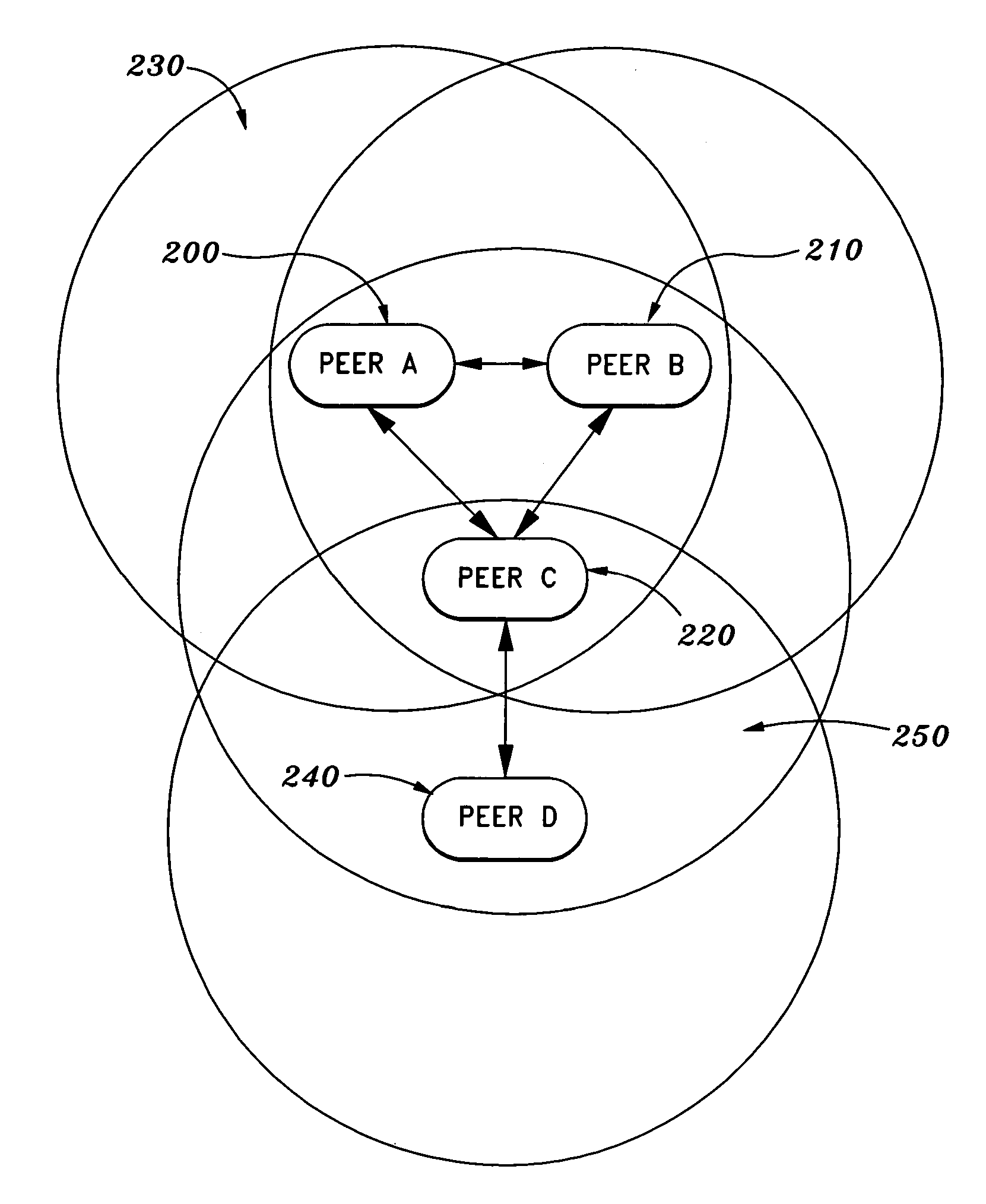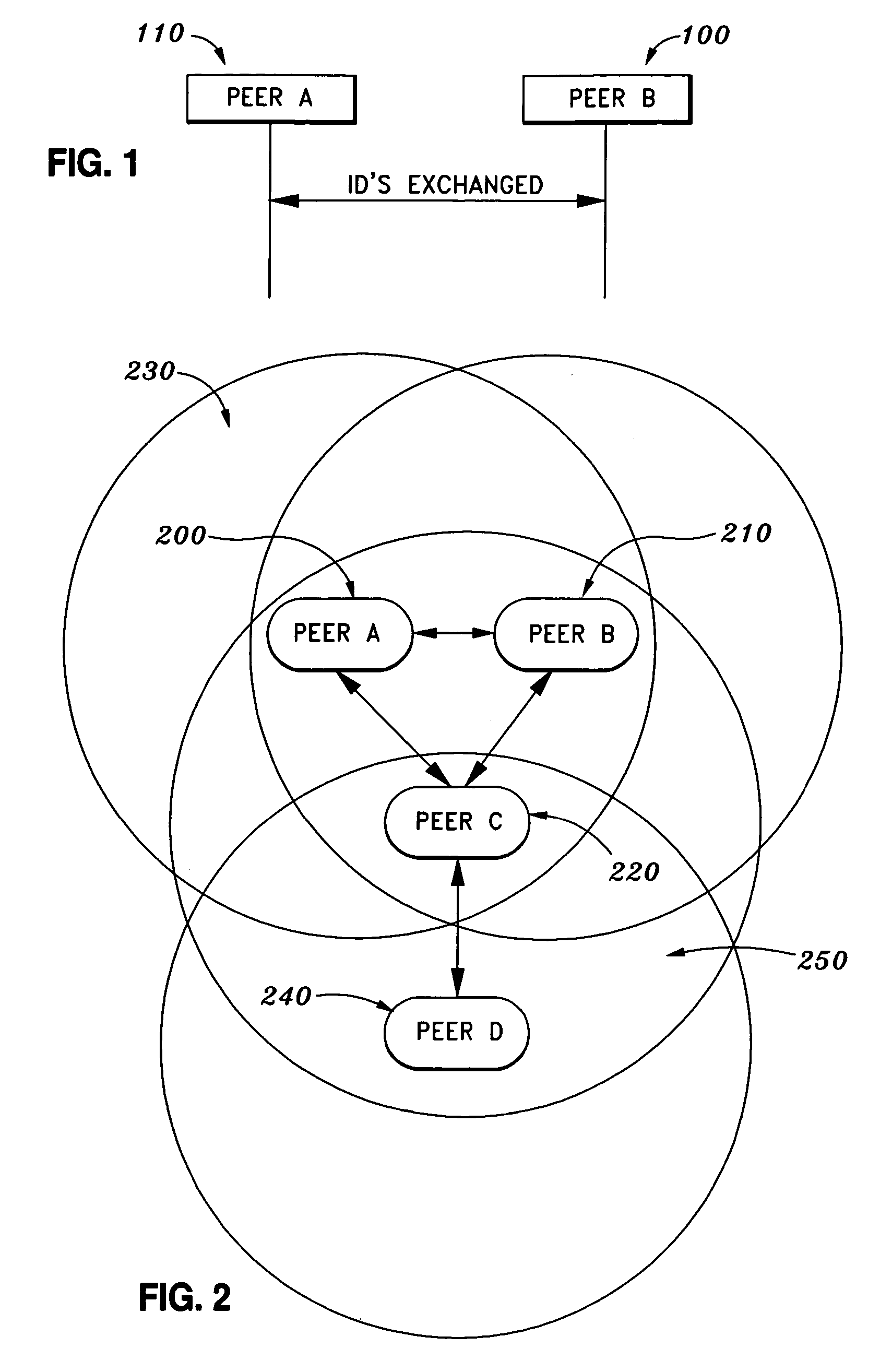Method and system for peer-to-peer wireless communication over unlicensed communication spectrum
a wireless communication and peer-to-peer technology, applied in wireless communication, data switching networks, wireless commuication services, etc., can solve problems such as communication traffic collision and congestion, and the range of bluetooth technology, so as to avoid message collisions
- Summary
- Abstract
- Description
- Claims
- Application Information
AI Technical Summary
Benefits of technology
Problems solved by technology
Method used
Image
Examples
Embodiment Construction
[0041]For the purpose of the present invention, a peer or a peer communication device is defined as any device with a unique identifier, having a wireless communication capability and practicing a communication protocol. Wireless communication can be over any wireless communication medium, including any radio frequency (RF) spectrum and infrared (IR) frequency without departing from the scope of the present invention. In addition, although an example of a communication protocol is described below, the communication protocol can be any wireless communication protocol without departing from the scope of the present invention.
[0042]Each peer is assigned a unique identifier from a fixed population of identifiers issued and recorded by the party designated by the inventors of the present invention. Each identifier consists of 4 octets, an octet being 8 bits.
[0043]FIG. 1 illustrates initial exchange of unique identifiers between peers. As shown in FIG. 1, Peer A (100) and Peer B (110) exc...
PUM
 Login to View More
Login to View More Abstract
Description
Claims
Application Information
 Login to View More
Login to View More - R&D
- Intellectual Property
- Life Sciences
- Materials
- Tech Scout
- Unparalleled Data Quality
- Higher Quality Content
- 60% Fewer Hallucinations
Browse by: Latest US Patents, China's latest patents, Technical Efficacy Thesaurus, Application Domain, Technology Topic, Popular Technical Reports.
© 2025 PatSnap. All rights reserved.Legal|Privacy policy|Modern Slavery Act Transparency Statement|Sitemap|About US| Contact US: help@patsnap.com



